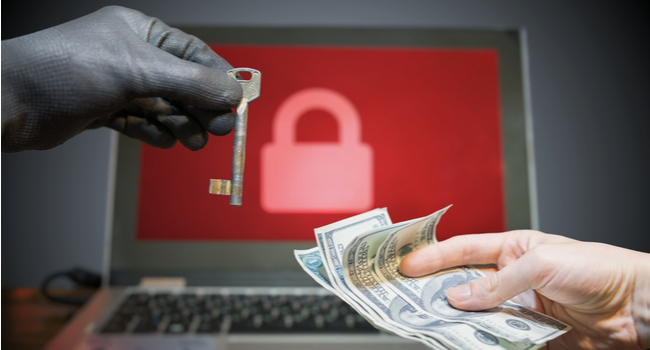
6 Easy Ways to Protect Your Business from Ransomware this Holiday Season
- By Eddy Bobritsky
- Nov 23, 2021
The holiday season is almost upon us, and with it come huge opportunities for companies and brands to capitalize with big sales. So much so that many companies depend on the holiday season sales to bring themselves to profitability. This makes it potentially much more devastating if they were to fall victim to a cyber-attack during this time.
Unfortunately, for all of us, hackers also love the holidays. On the one hand, online activity surges due to holiday shopping, which creates ripe opportunities for attackers to breach networks and demand ransoms. At the same time, many employees go on vacation, let their guards down, making it easier for attackers to phish, and deploy exploits to gain entry to networks.
Not surprisingly, it looks like things are going to be worse than ever this holiday season. As the FBI and the Cybersecurity and Infrastructure Security Agency (CISA) reported in September, “Cyber actors have conducted increasingly impactful attacks against U.S. entities on or around holiday weekends” in 2021. This trend promises to continue as we near the biggest holiday season of all.
So, how can businesses prepare for these cybersecurity challenges as they head into the holidays? The solutions are, in many ways, simpler than you might imagine. You do not need to overhaul your IT strategy or hire an expensive team of cybersecurity experts. Instead, a few simple cybersecurity practices can go a long way toward hardening your environment against risks like ransomware and phishing as the holidays loom.
Why is Ransomware Protection so Difficult Today?
Ransomware has become extremely easy to obtain and deploy. Hackers no longer need specialized skills to write malware and find ways to plant it. Today, anyone can easily purchase and deploy Ransomware through a third party, a new trend coined as Ransomware-as-a-Service, or RaaS.
A second challenge is there are many ways ransomware can infiltrate and harm a business.
Smaller businesses tend not to have the resources necessary to invest in a robust defense against them all. There are thousands of different strains of ransomware out there, with a ransomware attack happening every 14 seconds. With so much ransomware activity, there are not many simple tools or a single practice that can be deployed for protection.
Instead, many business owners believe that ransomware protection requires a complex strategy powered by deep cybersecurity expertise; something that sounds difficult and expensive to implement.
6 Simple Practices to Protect Against Ransomware
The fact that ransomware protection poses such a challenge does not mean there aren’t effective solutions. Following are five simple but powerful ways to mitigate the risk of a ransomware attack against your business.v
Reset all passwords. Threat actors often do not activate straight away after penetrating a network. Once they breach, they sometimes try to get a strong foothold on the rest of your network and only then activate. Resetting all passwords will make it much more difficult to gain access to additional points in the network and can slow an attack down significantly, or at the very least reduce the damage. Adding MFA (Multiple Factor Authorization) will also significantly improve the security of your network.
Patch your systems. Operating systems and various forms of software often have security exploits that need to be patches once detected. Neglecting you patch your OS and systems can leave you vulnerable to attacks through exploits, prevented through a simple update.
Define a clear security plan and strategy. Along similar lines, create, test and maintain an incident response plan for you company. Make sure, of course, to factor vacations into this plan. Here again, you want to avoid delaying your response due to holiday-related breakdowns in the normal chain of command or the unavailability of key stakeholders.
Educate employees on cybersecurity risks. Now is a great time to refresh all of your employees’ cybersecurity skills, reminding them how to protect against ransomware. In particular, remind them to be wary of risks like suspicious emails and other types of phishing attacks.
It is easier for workers to fall victim to these threats when they are working remotely during the holiday slowdown, or when they are simply paying less attention because their minds are half in holiday mode.
Backups, backups, backups. Backing up data systematically is one of the ABCs of ransomware protection at any time of year. As the holidays approach, it is a good time to double-check your backups to ensure that they performed regularly, and that they cover all of your critical data. Your company should also have a well-defined business continuity and disaster recovery plan (BCDR).
You should also make sure your backup data is stored separately from your production systems -- ideally, in an offline, “air-gapped” location (meaning a location that is not connected to the Internet). Otherwise, attackers may be able to wipe out your backups at the same time that they breach the rest of your network.
Finally, be sure you have a recovery plan in place. Backups are not worth very much if you lack the ability to use them to restore systems quickly.
Prevent Ransomware attacks before they happen.Ultimately, the best way to defend your company for Ransomware is to prevent attacks before they happen. Practices like resetting passwords and educating employees about phishing help on this front, but can only go so far.
Shameless plug alert - Minerva Labs’ ransomware protection platform the only tool that is purpose-built to catch and prevent ransomware in all of its forms -- including in cases where threat actors deliberately implement techniques intended to evade detection. Minerva recently release a cloud managed platform, with which small and medium sized business can now really protect themselves.
Ultimately, the best way to respond to the ransomware protection challenges that businesses face today is to prevent attacks before they happen. Practices like resetting passwords and educating employees about phishing help on this front.